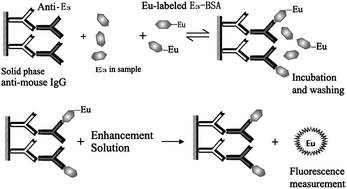A direct competitive inhibition time-resolved fluoroimmunoassay for the detection of unconjugated estriol in serum of pregnant women
Abstract
Unconjugated estriol (uE3) is one of the most important serum markers for prenatal screening. The abnormally low content of uE3 is used as an


 Please wait while we load your content...
Please wait while we load your content...